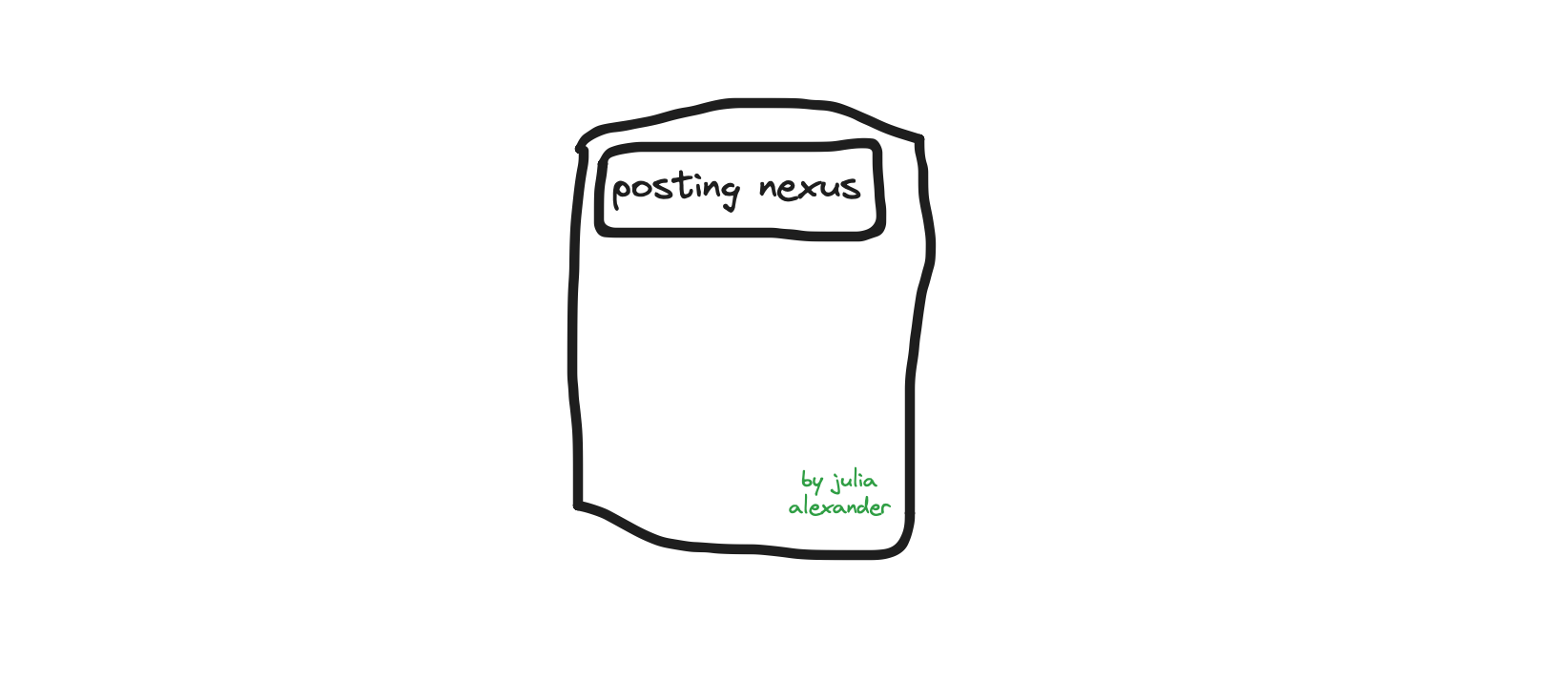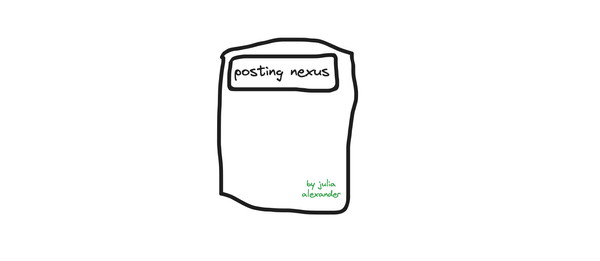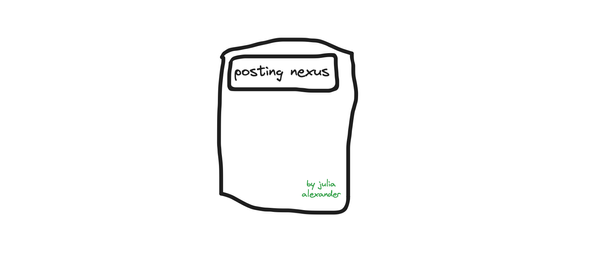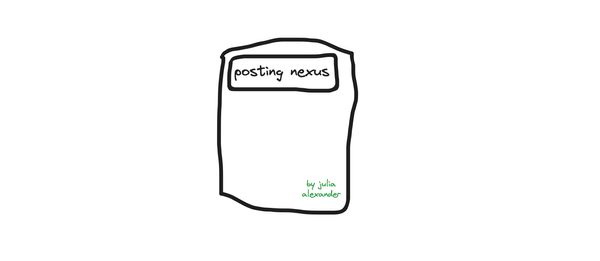People Aren’t Posting: What happens when people revolt against social media just becoming media?

There’s a Wall Street Journal story that occasionally makes its way around X from time to time. I saw it just last week again. The article isn’t groundbreaking, but it catches me every time. Basically, people aren’t “posting” as much. If you haven’t read, the Journal piece throws out a couple of quick stats alongside random quotes to reiterate the thesis — 61% of Americans are more selective of what they choose to post on social media (Morning Consult, October 2023); more than half of Americans argue social media has declined over the last five years (Gallut).
None of this is new to any of us who spend time on social media; it’s benign. Social media is more combative, it’s more consequential, and it’s less fulfilling. The issue with posting is that the incentives of major connector platforms like X and Instagram are at odds with the needs of most people. Social media companies benefit from scale. The more information that is fed into systems, the more data is collected, and the more “personalized” it will theoretically feel. This is the same economic structure that allowed Google to balloon into the conglomerate it is today. But humans don’t want to “scale.” We are biologically designed not to scale. The problem is that apps like Instagram are split into two separate platforms for two separate groups of people: a social connector and an entertainment media center. The goal is to balance incentive enough for the latter to ensure there is enough fodder for the former.
Trying to scale the social component doesn’t work for us, and that biological hesitation to try to grow our networks beyond our stable relationships doesn’t work for companies like Meta and X. It got me thinking — how do you encourage people to post while expanding the reach of their circle? You lean away from the social component and toward the media side. Friends morph into audiences. Platforms for connecting are no longer designed for relationships; they’re designed as media centers. We open apps like Instagram more and more like we do YouTube: Unconsciously, repetitively, for longer periods of time. We may not even recognize many of the people we see, and we think of our time on these apps as a form of wasting time on the internet (that is, leisure) rather than connecting with people in our own lives. We are posting less to consume more.
The social media era (Web 2.0) created a democratization across both supply and distribution chains. I refer to it as the Triple-A Play.
If social relationships work under the construct of known intimacy, which creates both psychological (happiness! acceptance!) and physical (reduced stress!) benefits, then entertainment operates under the rule of competing within unknowable power laws. The top minority of content entertains the vast majority of people, while the vast majority of content isn’t seen by most audiences. This is true across film, music, and fashion brands — and it’s also true with social media. Power laws have always existed, but it didn’t seem as steep when the flow of supply and distribution was more centralized. The social media era (Web 2.0) created a democratization across both supply and distribution chains. I refer to it as the Triple-A Play. Take music. Access to tools like Garageband to make and edit music became much more available through consumer products that also became far more affordable than they were in years past. The average price of a computer has continued to fall, dropping at a rate of more than 60% between 2004 and 2024, with the average price of a PC in the United States sitting at $2,200 in 2004 (when adjusted for inflation) and the average price of a PC in the United States in 2024 ringing in at around $860. This has only increased the affordability, availability, and accessibility, which helps to create more content across broader groups of people in democratized environments.
An average computer owner in the United States circa 2015 now had the technological capabilities to create at an accelerated rate. But making music was never the problem for bands and artists trying to make it big; the significant hurdle was circulation and exposure. Whether that was getting on a local bill at a city venue and playing to 100 people or getting in the door of an A&R executive at a label, navigating through the red-tape barriers disincentives many artists from pursuing it full-time. The democratization of the distribution side, therefore, was key to an explosive increase in the number of artists whose want for attention could be met on the platforms available to them.
As I mentioned above, platforms need scale, and scale is only possible through the incentivization of rewarding identity through attention. Going back to the Triple-A Play needed for this to exist at scale, ecosystems like YouTube and Spotify allowed anyone around the world to access a distribution portal through affordable means (meaning free) to reach curious (available) listeners. Democratization draws production, but production creates competition. The rule of power laws increases exponentially when production shoots through the roof.
The inevitable hurdle was always discoverability. It’s not just a tech issue. Humans don’t want to scale. We want to feel connected and, as our world expands each day through the trillion of interactions that happen online, that feeling of disconnect grows. What works for the distributors that allowed for democratization to happen actually hindered what made social media great in the first place. In an increased period of isolation, feeling like we’re connecting with others over a shared interest makes our world feel tangible again.
But platforms are businesses, and businesses that started on the idea of connecting humans together are now focused on mining as many of those accounts as possible for value: data. The more people create across the widest variety of interests, the more data available to collect and sell ads against. Meta remains the second-largest advertising platform globally. If you’re Instagram working to highlight ease of production while minimizing the reality of unscalable competition is mission critical. This becomes your number one problem. How do you get people to post if they feel like it’s going to get lost in the noise and it’s not going to further connect them to their friends or family? Think about it from the poster’s POV: where’s the incentive if you’re seeing other people get views, but you’re not? There is none — there is only discouragement.
Offline Rewards or Offline Punishments for Online Behavior?
Companies like Instagram are designed to encourage people to post more in order to receive offline benefits: brand deals, advertising revenue, and potential fame. Google used to reward consistent publishing on individual websites with enough referral traffic to generate some form of annual income. X, still my preferred social platform, used to reward posting with networking connections that could advance careers outside of the digital bubble. If I’m being honest, I got every single job I’ve ever had through tweeting. I giveth to Twitter (the top 10% of Twitter users create more than 90% of all content on the platform), and Twitter giveth to me.
The problem, as the Journal article gets at, is that the reward system has backfired. There aren’t as many opportunities within one solitary platform as fragmentation continues. Furthermore, attention now leads to hate. Off-platform opportunities aren’t given; they’re taken away. While this is a generalized statement and not reflective of every single person’s experience — I’m sure the D’Amelio family can attest otherwise — nearly 40% of U.S teens say that social media makes them feel overwhelmed, while 32% of U.S. teens say that social media has a negative effect on people their age, according to Pew Research Center. How many times have we seen the same story, where someone creates a post for their targeted community, but as it starts to catch on and lose context (the double-edged sword of virality), the once-innocuous post results in calls for consequences or humiliation? If we lose all sense of stability once our circle hits 151 people, there’s no sign of lingering sanity when our circle expands to 150 million.
The internet has started to get smaller as people contend with reclaiming some of the control they’ve lost. Consider what C.E.O. of Instagram Adam Mosseri said during an appearance on the New York Times’ Hard Fork podcast about people using their designed-to-be-at-scale platforms to exist in much, much smaller universes: Most of the time people spend on Instagram (as of July 2023) is in direct messages, according to Mosseri. “All the friends-sharing is moving in that direction,” he said. “There are more photos and videos shared in DMs than shared in Stories, and there’s way more shared in Stories than there is in Feed.” We can read this a couple of different ways, but the main takeaway is that people want more ephemerality in their social media, and they want to actually connect with those in their chosen circles. It is a pure retaliation of the algorithmic feed that has dominated every aspect of our virtual social lives. Here’s the big “but”: Retaliation is still dependent on content from those outside our own circles. People are sharing more in DMs, but they’re sharing content (memes, videos) mined from engagement on the app outside of our circles. The same holds true for other social platforms, too.
Nearly 40% of U.S teens say that social media makes them feel overwhelmed, while 32% of U.S. teens say that social media has a negative effect on people their age
The fundamental question for executives at companies like Meta is, does less public-facing posting really matter to their bottom line, and do advertisers only care that Meta continues to increase inventory of content? The answer so far appears to be no. More than 72% of people who use Facebook do so to keep up with friends and family, compared to the 50% of people who use it for entertainment, according to an April report from digital research group GWI. Comparatively, nearly 65% of people use Instagram for entertainment, and the largest percentage share of time spent on Instagram is to share photos or videos. That signifies a stronger ratio of posting to consuming versus X (62% of people use it to keep up with news versus 28% of people who post), Reddit (33% of people looking for entertaining content versus 13% of people who post), and even TikTok (80% of people looking for entertainment versus 50% of people who post). Instagram generated more than $31 billion in ad revenue in 2021 — that’s more than double YouTube, and about six times what Twitter pulled in 2022.
Power laws! The increasing nature of our lives being ruled by power laws — from what musicians we choose to stream to what movies we go to theaters to watch to which creators appear on our feed — means we effectively have two incentive pathways available to us. We can either try to compete for the 10% of attention that is given to people on apps like Instagram, X, and TikTok, knowing that the likelihood of your content being seen diminishes with scale. Or, as we’re seeing people do, you can consume content and share with friends. Apps like Instagram are split into two separate platforms for two separate groups of people: a social connector and an entertainment media center. The goal is to balance incentive enough for the latter to ensure there is enough fodder for the former.
For advertisers, which is who social media companies build for, this becomes a conversation about reach versus impact. More straightforward advertising opportunities used to trade one for the other (even though the goal is to find reach and create impact). Your ad playing during the Super Bowl meant huge reach, even if the overall impact might not be as high because people are distracted during commercials. The cost of the commercial went hand-in-hand with the potential to reach and create impact for that large audience. Conversely, local advertising that specifically appealed to a highly targeted audience would sacrifice reach for much greater impact.
We see this with local business and political messaging. Social media tried to streamline these by offering targeted (impact) scale (reach). Mobile-oriented platforms like TikTok and Instagram focused on highly convertible shopping experiences. Hyper-targeted audiences across “micro influencers'' increased reach for relatively niche interests. Everyone bought in. Even though digital advertising decelerated in 2023, it still broke revenue records with more than $225 billion in sales. And when you consider that nearly six-in-10 Americans don’t read through privacy agreements when using apps and products, the amount of data available to advertisers and marketplaces like Meta is astronomical.
Nearly 65% of people use Instagram for entertainment, and the largest percentage share of time spent on Instagram is to share photos or videos.
The most significant advantage that companies like Meta, Google, Reddit, and others have is an endless amount of inventory to support demand from advertisers. Power laws mean that blue-chip companies can appear next to Charli D’Amelio or partner with Jimmy “Mr. Beast” Donaldson, but there is opportunity for emerging creators to have their work validated by revenue splits (anyone with more than a thousand subscribers can join YouTube’s Partner Program to start receiving ad revenue). There is theoretically incentive for creators to try pursuing a career via social media platforms available to them, further transforming Instagram from a place where you connect to a place where you consume, even if the opportunity for at-scale discovery gets more difficult.
Slop ‘Em Up!
Since social media is now more aligned with digital video entertainment platforms, the act of posting is arguably more aligned with work rather than leisure, while the act of consuming is more aligned with being entertained and, therefore, sold to rather than offering connection.
Something that’s happened as creators rush to capitalize on the tantalizing promise of social media’s gold mine, advertisers look to reach even more people, and companies like Instagram cater toward advertisers under the guise of building for creators is that many of these platforms have gotten, well, bad. Ed Zitron calls it the “Rot Com.” Others call it the “Slop Era.” While time spent continues to grow on average, AI bots have taken over subreddits prompting the company to take additional measures to block bots from creating frustrating and negative experiences. Instagram is testing non-skippable ads that experts say will frustrate daily users. Reports about lax policies when it comes to Facebook moderation, even as the advertising revenue increases, have started to emerge. (Meta’s spokesperson told 404 Media that the company is investing heavily in moderation.) X has turned into Medium; the microblogging site designed for quick news and easy scrolling is moving away from that basic premise. The algorithm promotes longer posts, which are an exclusive feature via X’s Premium subscription plan that costs the user extra. As these appear on the timeline, there is new incentive for users looking for farther reach to emulate what they’re seeing, which means signing up for X Premium as company executives desire.
When looking at all of these issues in aggregate, it’s not difficult to see why people want smaller internet experiences. Mosseri said most activity happens in DMs. Facebook Groups is an extremely popular feature, with more than 1.8 billion users active in some kind of Group. Discord chats for YouTube creators to better connect with audiences are popping up. Subreddits dedicated to inanely specific topics are spurring activity. Hell, even this website you’re reading this article on is an attempt to make the internet smaller, to make it more tangible.
People posting less is theoretically an issue now, except it’s not to advertisers currently, which means it’s not to the platforms; if the vast majority of people turn into lurkers across the wider ecosystem but still engage with entertainment in smaller population pools, like direct messages and group chats, there is still high levels of engagement and attention to sell. The issue is therefore not a short-term business problem, but a long-term behavioral concern. Play it out — if people post less and operate in private messaging groups more, it does eventually get harder to hyper target said groups without getting into massive privacy debates.
25% of Statista survey respondents between 15 and 18 years old reported feeling lonely, which increased to 27% of participants for those between 19 and 27
Part of the solution to the posting problem seems two-fold. First, allow people to create their own smaller internets across large-scale distribution platforms like Instagram and X. The network effect is real. Trying to recreate it by getting entire networks to move from one place to another is extremely difficult. See: Threads and Bluesky versus X. But finding ways to better incentive creation, engagement, and sharing within smaller clusters can bring back the joy of social media while also helping to better target content produced by media creators. Secondly, create better incentive structures for those who want to post by designing for impactful results rather than implausibly large audience goals. Knowing that people are turning away from the large audiences in efforts to try and actually sustain connection with smaller groups that offer offline rewards — 25% of Statista survey respondents between 15 and 18 years old reported feeling lonely, which increased to 27% of participants for those between 19 and 27 — we must find ways to cater to them even if advertisers value those audiences less.
Everything comes back to power laws. Finding opportunities to shrink the largest oceans of topics (like anime) into a series of ravines and lakes (shonen anime, dystopian anime, classic anime) helps creators build communities, create a more realistic expectation of success, and drive targeted advertising. Power laws are inescapable on social media, much as they are throughout every other part of our online-first lives. But the future of the internet is smaller and more tangible than it’s become over the last decade-plus. Subreddits. Facebook Groups. Substacks. Patreons.
The more that people who want to post content for people with similar interests are able to do so in slightly more restrictive settings, the more comfortable they’ll feel about sharing, the less exposed they’ll feel when they open the app, and the more likely they’ll want to share those posts with their own friends. Discovery is still possible, but the goal of becoming the next Charli D’Amelio isn’t the ultimate KPI; it’s about validating the cost associated with time and effort put into an app, and rewarding that perceived value with the right ratio of positive feedback to account growth. Disappointment is the result of unrealistic expectations. Social media is nothing but unrealistic expectations. Changing that perception is wildly difficult, but it’s arguably beneficial for both society and corporations.
It isn’t a doomsday situation. Demographics change, technologies shift, and mediums disappear, but the concept of spending time in virtual social channels isn’t going to disappear. Our future is either implausibly big (Taylor Swift, Christianity) or intimately small (your favorite local D&D podcast, your community subreddit). Media’s middle class is all but eliminated. While this has existed offline for millennia, the fragmenting of our media ecosystem, unprecedented amount of content, and inescapable algorithmic overlords means we have no real control over what we see. What we can control, therefore, is how we exist within it.
Facebook’s original incentivizing tease was the ability to keep up with friends (echo intimate connection offline) and to encourage the voyeuristic obsession we have with knowing all we can about people we don’t know. Pursuit of growth at all costs has supported the latter, but often at the sacrifice of the former. We have seen a growing loneliness epidemic, spikes in anxiety and depression, and rapid spreading of misinformation and hateful content. The platforms pushed people to post — post, post, post — and created a world where the heightened understanding of consequences began to outweigh any positives of participation.
If the platforms continue to disincentivize posting by re-chasing pure growth instead of listening to what its users have yelled, network effects will change. Disinterest will follow, and those who feel scorned may not return. Again, see Threads and Bluesky versus X. Everything that happens — everything that we do — is based on incentive structures. The problem is that the incentive structures of the platforms no longer align with the incentive structures of the public. We are on the precipice of a new social reality driven by technological changes and our own better understood needs. Anything can happen, but if Meta and Google want those future, tinier internets to exist on their own turf, then it’s time for the incentives of the people to outstrip the incentives for the corporations.




